We normally don’t report on individual aircraft incidents here, because the causal factors are related to a very narrow set of unique circumstances.
This instance is different, and should be of concern to all operators.
A Challenger 604 at FL340 operating from Male-Abu Dhabi passed an A380 opposite direction at FL350, one thousand feet above, about 630nm southeast of Muscat, Oman, over the Arabian Sea.
A short time later (1-2 minutes) the aircraft encountered wake turbulence sending the aircraft into an uncontrolled roll, turning the aircraft around at least 3 times (possibly even 5 times), both engines flamed out, the aircraft lost about 10,000 feet until the crew was able to recover the aircraft, restart the engines and divert to Muscat. The aircraft received damage beyond repair due to the G-forces, and was written off.
An official report is to be published by the German BFU. In the interim, the complete set of circumstances can be read at Aviation Herald.
The current synopsis is copied here:
An Emirates Airbus A380-800, most likely registration A6-EUL performing flight EK-412 from Dubai (United Arab Emirates) to Sydney,NS (Australia), was enroute at FL350 about 630nm southeast of Muscat (Oman) and about 820nm northwest of Male (Maldives) at about 08:40Z when a business jet passed underneath in opposite direction. The A380 continued the flight to Sydney without any apparent incident and landed safely.
The business jet, a MHS Aviation (Munich) Canadair Challenger 604 registration D-AMSC performing flight MHV-604 from Male (Maldives) to Abu Dhabi (United Arab Emirates) with 9 people on board, was enroute over the Arabian Sea when an Airbus A380-800 was observed by the crew passing 1000 feet above. After passing underneath the A380 at about 08:40Z the crew lost control of the aircraft as result of wake turbulence from the A380 and was able to regain control of the aircraft only after losing about 10,000 feet. The airframe experienced very high G-Loads during the upset, a number of occupants received injuries during the upset. After the crew managed to stabilize the aircraft the crew decided to divert to Muscat (Oman), entered Omani Airspace at 14:10L (10:10Z) declaring emergency and reporting injuries on board and continued for a landing in Muscat at 15:14L (11:14Z) without further incident. A number of occupants were taken to a hospital, one occupant was reported with serious injuries. The aircraft received damage beyond repair and was written off.
Oman’s Civil Aviation Authority had told Omani media on Jan 8th 2017, that a private German registered aircraft had performed an emergency landing in Muscat on Jan 7th 2017 declaring emergency at 14:10L (10:10Z) and landing in Muscat at 15:14L (11:14Z). The crew had declared emergency due to injuries on board and problems with an engine (a number of media subsequently reported the right hand engine had failed, another number of media reported the left hand engine had failed).
According to information The Aviation Herald received on March 4th 2017 the CL-604 passed 1000 feet below an Airbus A380-800 while enroute over the Arabian Sea, when a short time later (1-2 minutes) the aircraft encountered wake turbulence sending the aircraft in uncontrolled roll turning the aircraft around at least 3 times (possibly even 5 times), both engines flamed out, the Ram Air Turbine could not deploy possibly as result of G-forces and structural stress, the aircraft lost about 10,000 feet until the crew was able to recover the aircraft exercising raw muscle force, restart the engines and divert to Muscat.
The Aviation Herald is currently unable to substantiate details of the occurrence, no radar data are available for the business jet, it is therefore unclear when the business jet departed from Male and where the actual “rendezvouz” with the A380 took place. Based on the known time of the occurrence at 08:40Z as well as the time when the CL-604 reached Omani Airspace declaring emergency and landed in Muscat, as well as which A380s were enroute over the Arabian Sea around that time The Aviation Herald believes the most likely A380 was EK-412 and the “rendezvouz” took place 630nm southeast of Muscat, which provides the best match of remaining flying time (2.5 hours) and distance for the CL-604 also considering rather strong northwesterly winds (headwind for the CL-604, tailwind for the A380s).
On Jan 7th 2017 there were also other A380-800s crossing the Arabian Sea from northwest to southeast: a Qantas A380-800, registration VH-OQJ performing flight QF-2 from Dubai to Sydney, was enroute at FL330 about 1000nm southeast of Muscat and about 400nm northwest of Male at 08:40Z. An Emirates A380-800 registration A6-EDO performing flight EK-406 from Dubai to Melbourne,VI (Australia) was enroute at FL350 about 470nm southeast of Muscat at 08:40Z. Another Emirates A380-800 registration A6-EUH performing flight EK-424 from Dubai to Perth,WA (Australia), was enroute at FL350 about 350nm southeast of Muscat at 08:40z.
The Aviation Herald received information that Air Traffic Control all around the globe have recently been instructed to exercise particular care with A380s crossing above other aircraft. The Aviation Herald had already reported a number of Wake Turbulence Encounters involving A380s before:
Incident: Virgin Australia B738 near Bali on Sep 14th 2012, wake turbulence from A380
Incident: Air France A320 and Emirates A388 near Frankfurt on Oct 14th 2011, wake turbulence
Accident: British Airways A320 and Qantas A388 near Braunschweig on Oct 16th 2011, wake turbulence injures 4
Report: Antonov A124, Singapore A388 and Air France B744 near Frankfurt on Feb 10th 2011, wake turbulence by A388 causes TCAS RA
Report: REX SF34 at Sydney on Nov 3rd 2008, wake turbulence injures one
Incident: Armavia A320 near Tiblisi on Jan 11th 2009, turbulence at cruise level thought to be A380 wake
MHS Aviation told The Aviation Herald, that they can not provide any further details due to the ongoing investigation, Germany’s BFU is investigating the occurrence (which confirmed The Aviation Herald’s assumption, that the occurrence was over international waters, Germany as state of registration of the accident aircraft thus being responsible for the investigation).
Authorities in Oman have so far not responded to inquiries by The Aviation Herald.
In response to our inquiry summarizing the known information so far as described above (however, mistakenly assuming the date of the occurrence was Jan 8th 2017 based on the information thus far) Germany’s BFU confirmed that they are leading the investigation. The occurrence happened already on Jan 7th 2017 at 08:40Z. The BFU is unable to provide further details at this time (in particular to which A380 caused the wake turbulence) because these details are subject to investigation. By Mar 8th 2017 no safety recommendations have yet been issued by the BFU. A preliminary report is estimated to be included in the January 2017 bulletin (which according to “tradition” should be released by mid of March 2017, however, the release of the Jan bulletin can currently not be estimated because so far only the August 2016 bulletin has been released by the BFU, the remaining 2016 bulletins are still being worked on).
More on the topic:
- More: Wake Turbulence: See You On The Flip(ped over) Side
- More: The 511 on the Nov 5th ICAO changes
- More: Airbus 380 flips CL604 – full report is now published
- More: Inside the cabin – before and after the wake turbulence encounter
- More: This is what an Airbus 380 looks like when it’s coming to get you
More reading:
- Latest: Belgium airports impacted by another nationwide strike
- Latest: ADC Numbers in South Asia: What You Need to Know
- Latest: NAT Changes 2025: No More Blue Spruce Routes
- Safe Airspace: Risk Database
- Weekly Ops Bulletin: Subscribe
- Membership plans: Why join OPSGROUP?



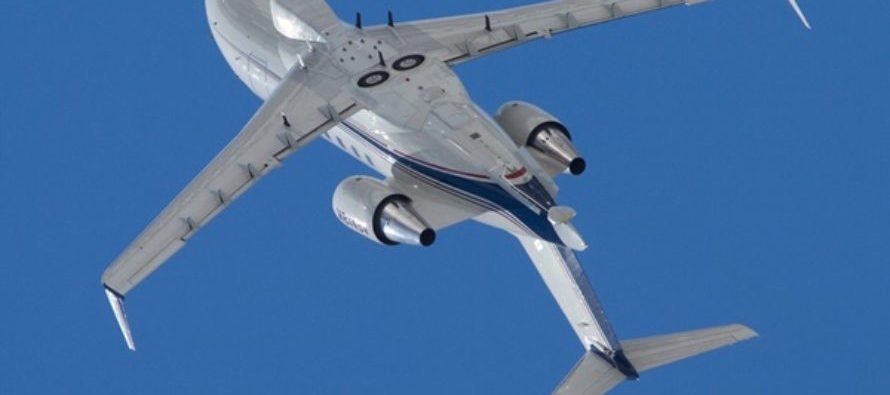

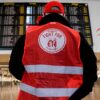



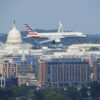

 Get the famous weekly
Get the famous weekly 



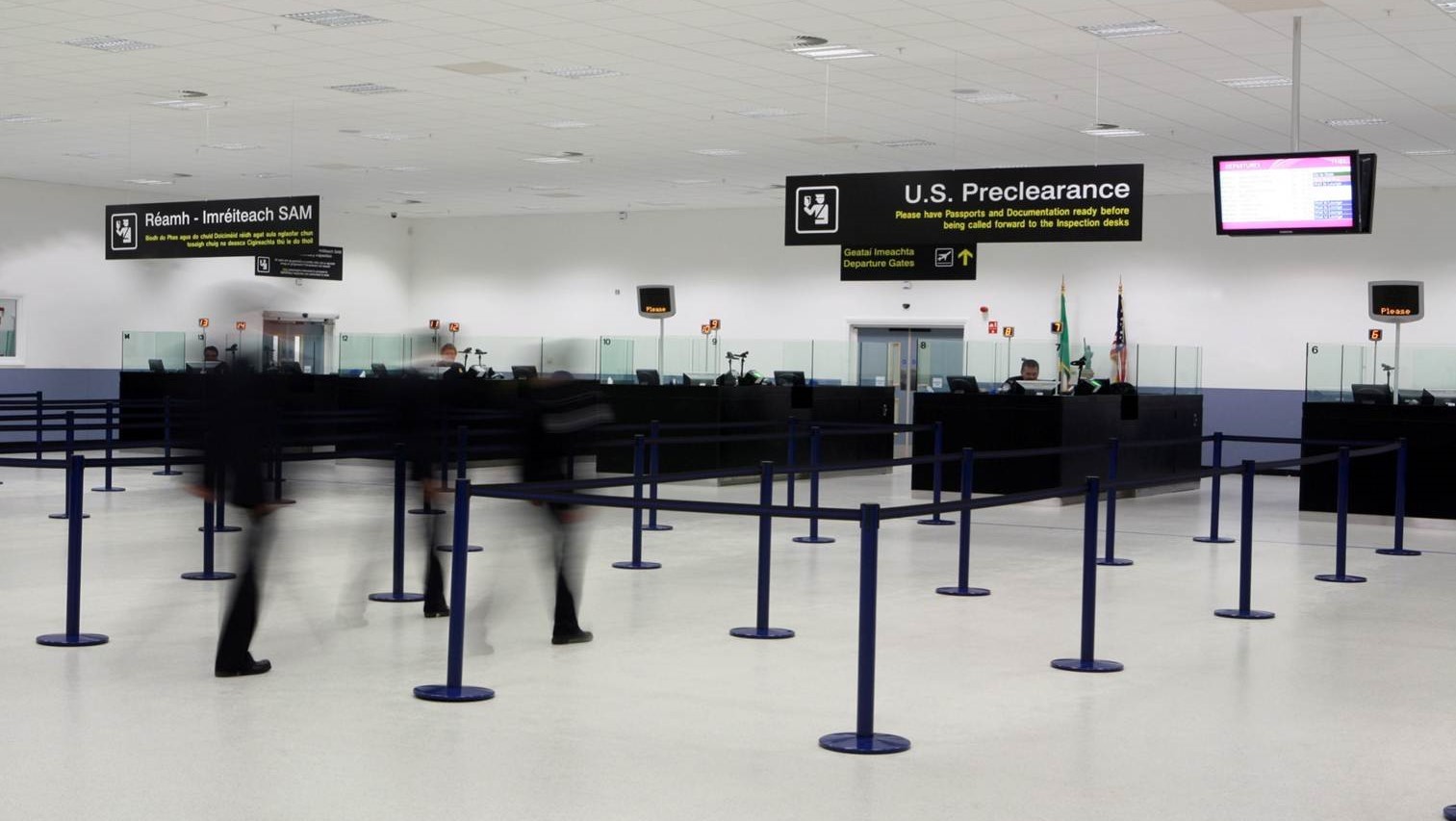
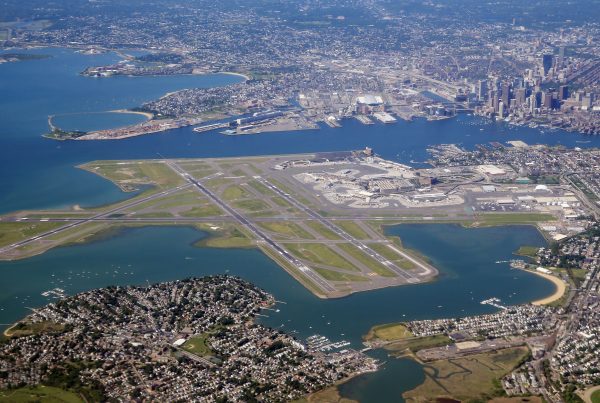
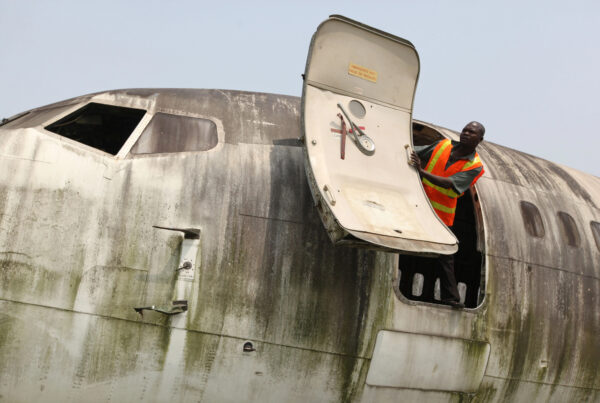
First off, great job to the crew on recovering.
Second, if both airplanes were employing SLOP this instance might well have been avoided. IMHO, ATC needs to start assigning SLOP to aircraft
(or at the very least super-heavies) to help minimize such instances.
Considering the initial accident report, I would consider that the crew did an excellent recovery.
https://www.flightglobal.com/news/articles/a380-wake-upset-inquiry-offset-not-permitted-on-rou-437303/
Again well done to crew involved.
Re. Challenger Wake High ‘g’ Recovery:
The damage to the aircraft is almost certainly not from the incident, but from the over-enthousiastic recovery.
To applaud a recovery by FL200 with lots of ‘Air Below’ misses the point, as in the case of a Lauda 767 which pulled a wing off ‘In The Recovery’ from an uncommanded Reverse Thrust in High Level cruise.
Such excessive ‘g’ Pull-Out would not have happened with an ex-military “Upside-Down” pilot well versed and happy in Unusual Attitudes, and it speaks more about today’s lack of Upset Recovery Training along with basic limited panel handflying skills…. Remember Air France 447…
Our crew on the Embraer 135BJ also encountered these wake turbulence.
The crew experienced the wake turbulences when a Etihad A380 passed 1000 feet above flying offset and parallel in opposite direction.
The second time it happened before approaching DESDI holding at Dubai International, slowing down behind an A380, which was much more serious resulting in a 80 deg bank angle upset attitude of the aircraft.
Flying SLOP can help, but it could also worsen the situation depending on the wind condition.
A flight crew notice was also drafted to make everybody aware of the situation and prepare the cabin for approaches where it can be expected in time.
Mike,
Just by way of physics, to keep a ton of aircraft in the air, you need to ‘push’ a ton of air downwards, that’s why wake turbulence descends.
The 500 or so tons of air pushed down by the 380 has inertia of it’s own so it makes sense that it will continue downwards for some time , how long ? how far ? at this time mostly guesswork but that’s what happens.
There are vortices that move above the aircraft but probably not for 1000′, they too will descend with the overall inertia of the downwash .
True. But I wouldn’t be so quick to condemn the crew. We all , well at least most of us, try to do our best. There’s a lot of gotcha’s out there. We all keep learning and re learning.
The Challenger 604 crew could be avoided the A380 wake turbulence by taking a parallel 1 mile course upwind before the crosspoint. It is legal and enough . Simple .
I suspect that the impulse to criticize the responses of other pilots is borne from an unconscious need a sense of control – to feel like one could never make a mistake that might end badly if faced with difficult circumstances. This is not limited to pilots, but seems common among people who do things that are risky where mistakes have fatal consequences.
I operate in that area day in day out.
The area is an oceanic non radar controlled and very very congested.
ATC there cannot really predict precisely who’s crossing when; despite their ADS capability, not all aircrafts are CPDLC/ADS equipped.
The area has probably the highest population of A380 worldwide due to Emirates fleet.
SLOP procedures are implemented and personally I always apply them on those routes..
BC, the ONLY thing the crew could have done proactively would have been applying 2nm right SLOP.
Depending on winds, that wouldn’t have necessararely prevented the wake encounter.
The INDUSTRY should aknowledge this issue that persists since A380s started flying.
Many possible mitigating solutions could be considered: SLOPs, dedicated A380 routes (especially in those Oceanic areas), no RVSM between super and light are just a few I can think of.
Many years ago before wake turbulance avoidance was well known, while then a highly experienced 21 year old CW2 Aircraft Commander (AC) while on low level Left Base in a UH-1H Huey to Song Be, VN, upon turning base to final, we suddenly rolled hard left to 90 degrees angle of bank at 50 feet above the trees. A Chinook had just landed and we’d encountered wake turbulance. Fortunately, I was able roll out, avoid trees and land. So it affects rotory wind opps, too. Be careful out there.
Good wake up call for cruise segment. Now that I think about it, a majority of U.S. traffic seems to be regional jets and 737’s A320’s and bizjets, but I still have felt the occasional nibble of vortices. However, whenever I operate out of major airports I will always ask for the 3 min wake avoidance, and if I’m behind a big bird, I’ll ask to be resequenced. A few years back, a Westwind Jet was flipped on approach to KSNA when flying too close to a 757.
Arthur Netteler, I am not saying what happened to you didn’t. However, back in 1985 FL320 was not an option for filing, and RVSM was not an option over the States. So, maybe you were at FL330, maybe FL350 or even FL310?
Just clarify the level mentioned in the first para. Male to Abu Dhabi should be West bound and Dubai to Sydney to be even. No such incident was reported to the concerning ATC unit.
Tug, so much for your disbelieving captain! I’ve seen many videos of large aircraft like 747s landing over a beach crowded with holiday makers taking pictures of those planes just 30 feet above them. The aircraft touch down on a runway about 200 feet away! I wonder what those people feel when the wake hits them? Cannot be pleasant if they’re unprepared!
I was working on a 110 foot tugboat dredging Boston harbor near the approach end of 4R and the airport changed runways so that 4R came into use. It was calm summer cavu day and being concern about paperwork, I told the captain to close the wheelhouse doors because we were going to start getting wake turbulence from the approaching aircraft. He thought I was nuts and laughed at me. I watched the wake from a large plane encounter the water surface a couple hundred yards away and travel straight toward us. It blew all the paperwork out of the wheel house, knocked stuff off the shelf in the wheelhouse, and rocked the boat and damaged the unsecured wheelhouse door. I worked for an airline so I knew about wake turbulence but didn’t really understand how strong it could be until I felt it first hand. Not sure I want to be in an airplane of any kind that encounters that.
I find it hard to accept that an A/C which brought itself and everyone else back safely is deemed irreparable and a total loss.
Hasn’t anyone in this debate considered the use of SLOP on 2 way air routes? ( Strategic Lateral Offset Procedure). Given that RVSM airspace gives only 1000 feet vertical separation , SLOP allows pilots in oceanic airspace ( and some domestic) to offset their track by up to 2 NM. to the right. Assuming planes apply it in both directions, up to 4 NM wake turbulence separation is created. This certainly mitigates the risk of what happened to the 604. ( dead easy to do in any FMS) And fully approved .
Walker Fricks – look at the G limits on the airframe. In a wt scenario enroute, the a/c has no need to be at maneuvering airspeed. Since wt is going to dish up the definition of severe turbulence the a/c does a slamo into the proverbial wall.
Hats off to the crew pulling off full recovery in 10K feet – simply extraordinary. Had they been in an Airbus they’d be rebooting the fms all the way to terra firm -1m
Could not agree more Burns, BCdoes not have a clue as to what he is talking about..
Interesting reading and seems normal that many comments are to give advice and be critical of the pilots describing what they should have done. I agree that in a perfect world the pilots in the 604 should have been aware to avoid the situation but I compliment them for reaching a safe landing. Asking ATC with a control for maybe a dozen aircraft to provide more protection to each aircraft with two pilots does not seem to be the best option. More responsibility for ATC and less for the pilots. If ATC is responsible, we may as well have pilotless aircraft and allow ATC to pilot drones. We pilots have responsibilities for a safe flight and that includes avoiding known areas of danger. But, until all is known, I would not make any judgement toward any pilot. We pilots are the first to blame in all situations that go wrong.
All of us Pilots must be proactive during flight. Understanding the limitations of wake turbulence and its avoidance is primary…
What damage caused the CL604 to be totaled?
Judging from the comments here, it appears that ATC worldwide needs to be more aware of the hazards of wake turbulence at altitude.
I haven’t flown in years but managed to experience wake turbulence on finals in a small GA single behind a B737-200 at a rural field in the early 1990s – in my case I’d opted for a long final to be 7 minutes behind the boeing, kept above his approach slope but still had an incredibly bumpy ride about a mile off the threshold and gave up after spending 20 seconds being tossed around badly enough that the wings were creaking. It was a still day and investigators think that thermals were keeping the wake aloft.
My anecdote and those of others underscore that published wake clearances are _minimums_ and the danger can persist far longer than that at times. It’s prudent to take more clearance if you can get it and if ATC are “sounding annoyed” then it’s time to revisit their human factors training.
I’m a layman but a keen observer of all things flight! Amazing how wake vortices descend as if due to gravitational forces! If this is as serious as it sounds shouldn’t flight plans take into account momentary diversion of smaller aircraft when they flyby larger jets? This Challenger jet incident could have been a lot worse had it not been for the skill of the pilots! And it seems commonplace too, going by comments here! Serious enough for ATCs to take note!
ATC should vector smaller planes away from larger plane flying overhead by approximate 30 degrees for a few minutes, then back n course, as a TWA 747 pilot I didn’t have this problem. However, in the DC-9 I did following 747’s. My aiming point was the four bars, not the three.
@BC, looks like Airbus manipulated some numbers in their AFM. 1000 ft of vertical separation is clearly not enough! I wonder how Airbus cooked those numbers….
I fly a very light jet. It has occurred only twice but when advised that an airliner (any size will do) is about to pass overhead 1000 feet above I have asked for a 15 degree vector upwind of the other aircraft. ATC acted annoyed once to which I promptly responded that I will pass through its wake turbulence about 2 minutes from now. No argument after that. This is a potential problem with vastly different size aircraft flying in RVSM. A B-737 vs. a B-787 or B-747 can generate the same result. We pilots have to anticipate the worst even what the authorities would tell us is likely a non-event.
35 Windermere Cr
Mike, wake vertices normally descend and spread in accordance with the winds. Also the strength of the wake is dependent upon the weight of the aircraft i.e. the amount of lift needed to be generated. So a light aircraft above a heavy would normally not be an issue.
rendez-vous
A question from a layman.
The reported cases here seem to include situations where the smaller plane passed below the larger one. Could the same happen if the smaller plane passes above?
Blury: I see you don’t get how any human community works, including the Internet. You adhere to certain guidelines or rules in communicating with people. Even when the rules vary among groups and even when your are anonymous.
But the negligent unfounded critics observed above is never welcome in any community, except among trolls who purpusefully want to insult people for the sake of insult. People should know what they are talking about.
The manufacturer of the airliner is irrelevant. To allude otherwise is concerning. It could just as easily have been a Boeing.
Great account Arthur! Most interesting. Another way to put this issue into some kind of perspective is that in the case of a one thousand foot vertical separation, that is only slightly more than three times the wingspan of an A380. Probably four times the wingspan of a Galaxy.
“Let’s make a rule”… I see you don’t get how public forums on the Internet work
First off… BC have you EVER Flown FL360 as PIC? My guess is your not even a Rated Pilot. You do what your Flight Plan & ATC says to do unless you have GOOD reason the change. Changing just might put you into the PATH OF ANOTHER AIRCRAFT! They were on their APPROVED PATH!
Secondly. In July of 1985 we were flying (Ozark Cargo DC915) west from Baton Rouge, LA to John Wayne with Oil Well Parts. About an hour out at FL320, 1st Officer Riley (1,200 Hours in Type) had assumed PIC. It was a beautiful day to fly, we were on FP 0199 from our normal Company list. We heard a Galaxy C5 talking to ATC on the reverse course. About 3 minutes later they passed 2,000 ft above us. About 2 minutes after the fly-by were were hit by the WORST TURBULENCE I remember, outside of being in a Storm. We rolled nearly 90 degrees to Starboard before being pushed down about 4,000 ft.. This lasted about 30 seconds., and left us with coffee and PBJ all over the Cockpit! If we had been in a smaller Aircraft I think it would have been a whole different outcome!!
Lets make a rule if you don’t have a clue what you are talking abut just read or listen. Thats for you BC. I would love to hear ATC response to my request to move left or right depending on upper level winds very time a large jet was approaching me on an airway in the opposite direction. Good job to the crew for recovering the jet!
Come train with us … in our jets …at altitude to learn from test pilots how to prevent and safely recover from loss of control situations like this. http://WWW.FLIGHTRESEARCH.COM
Or contact me anytime: tbmensching@flightresearch.com
A few years ago the 2000 ft requirement was eliminated for aircraft with advanced certified sensitive altimeters. The rrquirememt for 2000 ft starts at FL290.
I thought minimum ifr separation was 2000ft in the flight levels I don’t know how that happened
BC you must be trolling or not understand how IFR clearances work. Normally the 1,000′ separation in RVSM is enough to preclude any wake turbulence effects other than some light bumps. This crew successfully recovered an aircraft from a very dangerous position, and while you might like to monday-morning quarterback and point fingers, I’d like to see you try it.
What really needs to happen is educating ARTCC personnel to understand the lethal danger of heavy and super aircraft wake turbulence at altitude and their adverse and potential deadly effect on smaller category aircraft.
Our CL605 was rocked rather moderately after crossing 1000′ below an A380 30 miles to our left. It was sporty to say the least! When I reported it to Center, the controller’s reaction was amazement and disbelief, and almost dismissive.
If anyone has any doubt about the longevity or persistence of wake vorticies, pay attention to contrails you pass on moist days and watch the vortices spin tightly well beyond the “few minutes” ATC routinely separates enroute aircraft by.
I don’t salute them. They were idle and not proactive in avoiding wake from a super, in probably wanted a photo op of the Super380. I say negligence in their lack of foresight to something so blatant and clear.
Salute for the challenger crew.
All credit to the challenger crew for recovering from a potential terminal LOCi.
Maybe the Atlantic SLOP procedures are necessary on airways in vicinity of Cat D & F A/c .
Experienced wake of a 747 west bound, 1000ft above, whilst we were southbound and with 10Nm separation, which caused injuries in the cabin..